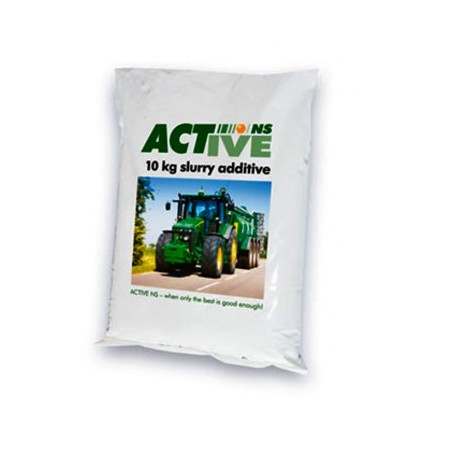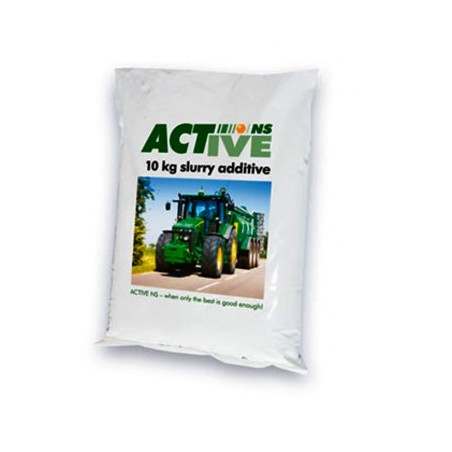Protein composition and protein levels in swine diets are, respectively, the factors that most greatly impact the carbon footprint of meat production and the emission of polluting manure gasses (Ammonia [NH3] y and greenhouse gasses (GHG; nitrous oxide [N2O] and methane [CH4]) (European Environment Agency, 2017). Substituting cereals for fibrous by-products from the food industry may help reduce the estimated GHG emissions from feed production, by using local ingredients and by adding value to renewable resources. On the other hand, nitrogenous fertilization of agricultural land is responsible for the major part of the N2O agriculture emissions, and this GHG has a global warming potential 300 times greater than that of CO2. The most significant nitrogen loss from slurry is the volatilization of NH3, which not only has adverse health effects and negatively affects the environment, but also represents a loss of N and lowers the slurry fertiliser value. Previous studies (Aaarnink y Verstegen, 2007) suggested that increasing fiber levels in swine feed may contribute to reducing the NH3 emissions from slurry, by increasing the ratios of N excreted in feces/urine and lowering the pH. However, this strategy could decrease performance in finishing hogs and increase manure volume. Additionally, its impact on the fertiliser value of the slurry and gas emissions on agricultural lands has not been well studied.
A great many of the by-products from the Mediterranean area are derived from the oil industry, and the citrus (and other) fruit juice industries. These by-products are characterized by a high fibrous fraction, very variable composition and level of lignification, which determines its potential use by the intestinal microbiota and its energy contribution in swine diets. In addition, certain types of secondary metabolites of the plants, which are functionally bioactive, are concentrated in those by-products plants, the most important group being the polyphenols. The most abundantly found polyphenols in fruit are the flavonoids and within this group, the flavanone naringenin is specific to citrus fruits and has a high bioavailability (40-50%) while the carob bean has abundant polymerized flavonols or proanthocyanidins (condensed tannins) that are mainly excreted (some 90%) in the feces (Bravo, 1998). It is estimated that about 95% of the polyphenols ingested arrive to the cecum intact, where they are metabolized by the cecum's microbiota, and their catabolites are absorbed and excreted in the urine or eliminated in the feces. The antioxidant, anti-inflammatory,and bactericidal activities of the polyphenols, have been thoroughly demonstrated, but their interactions with the microbiota, present at the intestine and on the agricultural land, are lesser known.

Recently Beccaccia et al. (2015) measured the gas emissions of slurry from pigs that had been receiving a conventional control diet (barley, wheat, and soybean meal) or diets supplemented with increasing levels (7.5 and 15%) of citrus pulp or of carob bean. The five diets were formulated with the same fiber level (16% NDF) following commercial standards (Fedna 2008), net energy and digestible amino acid levels were maintained constant. The digestibility and N balance trials demonstrated that the volume of slurry (kg/animal), its N and dry matter concentration were not different between the diets, although the pH of the slurry was lower for the diets with 15% by-products (7.5 vs 8.1 for the control diet, p<0,05). At the same time, the daily NH3 emissions per kg of slurry were lower in all of the diets supplemented with fibrous by-products than in the conventional diet (2.44 vs.1.81g average; p<0,05) and the slurry from these diets showed a lower potential for emitting CH4, independent of the fiber source (table 1).
Table 1. Effect of the source and level of by-products in the diets of finishing pigs on the characteristics and emissions of slurry. (Beccaccia et al., 2015).
| Diets | Control | Citrus pulp | Carob bean | ||
|---|---|---|---|---|---|
| Level of by-products | 0% | 7.5% | 15% | 7.5% | 15% |
| Slurry characteristics | |||||
| Dry matter, g/kg | 137 | 109 | 115 | 101 | 122 |
| Total N, g/L | 9.9 | 8.3 | 7.7 | 8.2 | 7.5 |
| Ammoniacal N, g/kg | 3.0 | 3.9 | 3.3 | 3.0 | 3.6 |
| pH1 | 8.8 | 8.0 | 7.4 | 8.2 | 7.5 |
| Slurry gas emissions | |||||
| g NH3/kg slurry2 | 2.4 | 1.8 | 1.6 | 1.8 | 2.0 |
| mg NH3/kg N slurry1 | 207 | 209 | 169 | 205 | 186 |
| CH4, L/g volatile solids1 | 353 | 393 | 332 | 361 | 326 |
1 Linear effect (p≤0,05) of the level of by-products
2Control vs. all of the diets with by-products (p<0,05);
When these slurry were used as fertilisers (Sanchez et al., 2017), the N2O emissions from raygrass planted fields were reduced by 47% with the slurry obtained from diets supplemented with carob bean and a 65% in those that included citrus pulp, compared with slurry obtained from the control diet (figure 1). The reduction of the N2O emissions was related (r = -0,92; n= 5, p<0,05) to the amount of benzoic acid in the slurry, while the mineral N (NH4+-) concentrations retained in the fields was positively related (r = 0,90; n= 5, p<0,05) with the hippuric acid. The source of both acids in the slurry from the diets with citrus pulp were the polyphenols (naringenin) while the condensed tannins in the slurry from the diets with carob beans probably reduced the nitrifying and/or denitrifying capacity of the bacteria in the soil, lowering the emission of N2O in the first three weeks after manure application.

Figure 1. Weekly emissions and total N2O of fields fertilized with slurry from hogs that received diets supplemented with by-products (Sánchez et al., 2017)
These results show the potential of new strategies of animal feeding to reduce NH3 y GHG emissions from the swine production industry and from agriculture, and the carbon footprint estimates from feed production with the use of fibrous by-products replacing cereals in swine diets.







